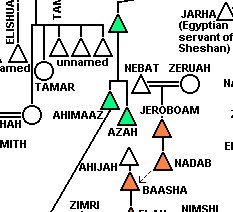As a young Christian, I often think about my generation–the “Y” Generation or the “Promise Generation” or whatever you want to call it. Undoubtedly my generation has “walked in the ways” of our fathers, the ’60’s generation. Sex, drugs and rock ‘n roll are still the order of the day. Nothing seems to be on its way to changing the moral state of my generation anytime soon. Certainly there are movements of young Christians in the United States, both Protestant and Catholic, which are bringing about some level of spiritual health and conversion to my generation. But on the whole, my generation is still sliding down the slippery slope of moral decline.
So what gives?
A lot of people say we are in the Post-Modern era (whatever the heck that means!) or even the Post-Christian era. But where are we really? Is our generation a fallen away generation that knows the right thing to do but refuses to do it like Jeroboam–who set up golden calves at Bethel for the Israelites to worship? Have we rejected the Lord and followed the ways of the other nations? Or are we more like Assyria, simply lost in a pagan world with no point of reference? The Assyrians (and the Babylonians, Egyptians, Persians, etc.) had no clue. They weren’t as culpable for their immorality as Israel because they weren’t in a covenant with the Lord.
Are we a generation of rebels or pagans? If I had to wager, I’d say pagans. I think the ’60’s generation was a generation of rebels trying to bring about the upheaval of Christian morality in the name of “freedom.” But my generation is a different story. We haven’t really rebelled at all. We’ve simply bought the whole lie–the sex, the drugs, the whole package–hook, line and sinker. We’re simply a generation of groupies and copy-cats. There’s nothing our generation is doing that our parents didn’t do.
Yet in the midst of such moral decline, people have simply lost a point of reference. There is no sense of national identity, universal morality or even a common language. Everyone is left to pursue whatever they feel like, especially because we are so wealthy as a nation. But I think my generation and the ones following it will be desperate for a point of reference. Riches and immorality only please for a season and then give way to disaster, as in the case of the Roman Empire. Eventually our prosperity will be our downfall. We’ll become so lazy and happy as a nation, drunk on our own sin, that we won’t know what to do when disaster strikes.
In Ancient Judah, King Hezekiah sought the Lord in prayer when Assyria came against the nation and the Lord delivered Jerusalem. But our generation won’t even know who to pray to when we confront a crisis. We won’t have someone to “return” to because we weren’t with him in the first place.
 I came across a relief at the Nelson-Atkins Museum of Art in Kansas City that was taken from Persepolis. It depicted two men carrying gifts–a lamb and a loaf of bread–to the Persian king Darius. After 2500 years, it’s not in great shape. I didn’t take a picture of it, but here’s a picture of part of the same relief.
I came across a relief at the Nelson-Atkins Museum of Art in Kansas City that was taken from Persepolis. It depicted two men carrying gifts–a lamb and a loaf of bread–to the Persian king Darius. After 2500 years, it’s not in great shape. I didn’t take a picture of it, but here’s a picture of part of the same relief.

